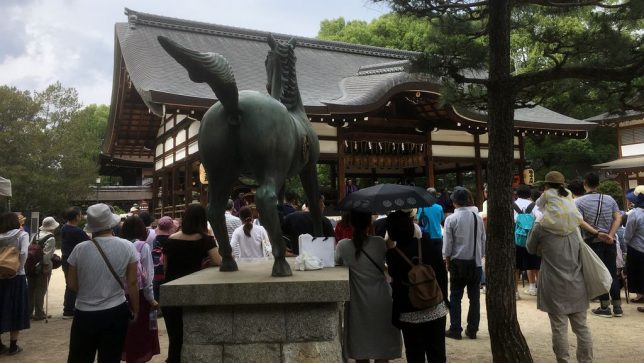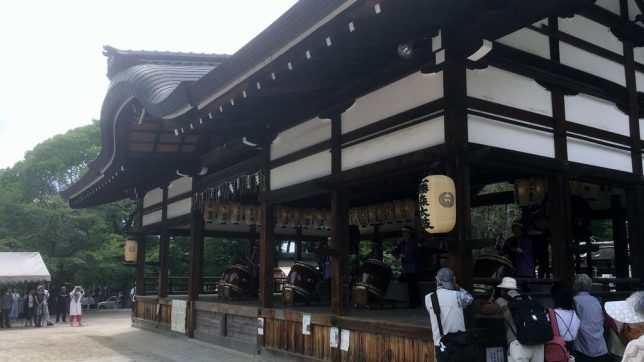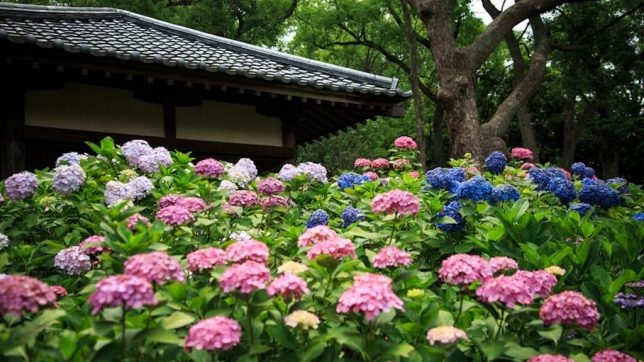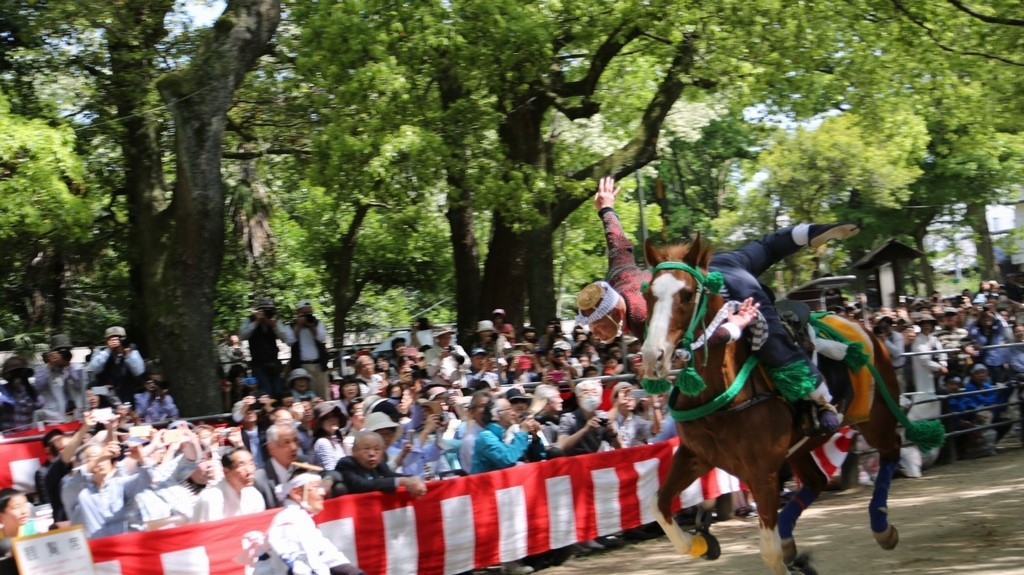A shrine, known for answering prays in relation to victory, is the origin of Children’s Day.
Fujinomori Jinja (藤森神社) is an ancient shrine located in southern Kyoto. Fujinomori Shrine is said to have been founded by Emperor Jingu. In 794, Fujinomori Shrine was chosen as the location of a ritual carried out for the relocation of the Heian capital to Kyoto, where the Empress Jingu supposedly raised a victorious battle flag. Fujinomori Shrine houses the battle flag and 12 deities here.
The origin of Children’s Day (5th, MAY) was born at this shrine, and today Fujinomori Shrine is well known for hearing prays of victory, studies, and horse racing.


The hydrangea Garden
The shrine’s grounds are made beautiful with a hydrangea garden, containing 3,500 hydrangea plants in a variety of colors from pink and blue to white. The hydrangea garden blooms in June during Japan’s rainy season. You can take a seat in the garden or enjoy strolling among them in full bloom. The shrine holds a Hydrangea Festival during the season. Japanese traditional performances such as tea ceremonies, Shinto rituals will be held at weekends during the festival.

Fujinomori Shrine (藤森神社)
Address : 609 Fukakusa Toriizakicho, Fushimi Ward, Kyoto, 612-0864
Hours : 9:00 to 17:00
Admission : 300 yen (garden)
Access : 6-minute walk from Sumizome station on the Keihan line or 10-minute walk from JR sumizome station on the Nara line.
Events

Fujinomori Matsuri Festival (藤森祭)
Fujinomori Matsuri Festival is held at Fujinomori Shrine every year from MAY 1 to MAY 5. During the festival, there are many food stalls in the precincts, and portable shrines are carried around the shrine. There are also Japanese drum performances, and a samurai parade.
The highlight of this festival is “kakeuma-shinji”, acrobatic horse-riding ritual. It has 1,200 years history and was originally a ritual to pray for the safe return from the battlefield and victory for the samurai. You won’t miss the riders show their acrobatic skills on horseback.